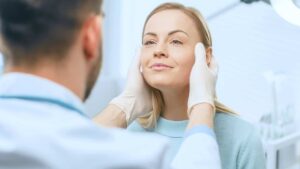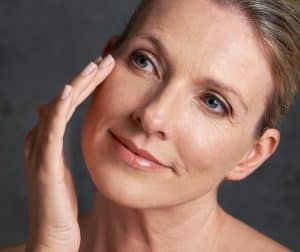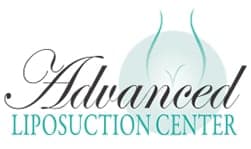Anti Aging Skin Regeneration
Anti Aging Skin Regeneration

A strong, shared focus on using minimally invasive procedures to avoid surgery is a central reason behind the partnership between the Advanced Liposuction Center and Body beautiful Laser Medi-Spa.
By nature, they involve the accumulation of small amounts of damage (microtrauma) over a long period of time. This is what stem cell therapy, PRP, and other regenerative therapies treat by initiating and maintaining a strong healing response.
- Stem cell therapy is a completely natural, injection based treatment which is designed to stimulate the body’s regenerative abilities.
- Platelet Rich Plasma (PRP) injections, and related techniques uniquely suited to the treatment of facial rejuvenation
Platelet Rich Plasma (PRP) Therapy: an introduction to Regenerative Medicine.
Medical researchers have always sought methods which harness the body’s unique ability to heal itself. Yet only recently have minimally invasive techniques been developed which are truly effective. This relatively new field is known, quite fittingly, as Regenerative Medicine.
Platelet Rich Plasma (PRP) therapy is one such technique that’s becoming increasingly popular. PRP injections were first used in 1987 to encourage healing following open-heart surgery. Positive initial results soon led to the adoption of PRP for urological and some dental surgeries. Today, this versatile technique has become a favorite of both orthopedic physicians and the Health and Beauty Industry.

- Hyaluronic Acid strengthens the skin’s defenses. Properly hydrated skin with a healthy lipid barrier will have a naturally enhanced resilience to daily damage. A product containing Hyaluronic Acid (HA) helps the skin maintain this critical moisture balance.
- Many people who regularly use a Hyaluronic Acid (HA) product enjoy improved skin texture. Much as it makes the skin appear tighter, HA also leaves the skin with a silky finish you can not only see but feel.
Are these treatments painful, and is anesthesia or numbing required?
The level of pain experienced during anti-aging skin regeneration treatments can vary depending on the specific procedure and individual sensitivity. Some treatments may cause mild discomfort or a tingling sensation, while others may involve a higher level of discomfort. However, many of these treatments utilize numbing creams or local anesthesia to minimize any potential pain or discomfort.
For non-invasive treatments such as laser therapy or radiofrequency procedures, numbing creams or cooling devices are often used to make the procedure more comfortable. In some cases, the healthcare provider may administer local anesthesia to further minimize discomfort during more invasive procedures.
It’s important to discuss any concerns about pain or discomfort with your skincare professional or dermatologist before undergoing any treatment. They can provide detailed information about the specific sensations you might experience and discuss the options available to ensure your comfort during the procedure.
Can these treatments address specific concerns such as wrinkles, sagging skin, or hyperpigmentation?
Yes, many anti-aging skin regeneration treatments can address specific concerns such as wrinkles, sagging skin, and hyperpigmentation. Here’s how these treatments can target each of these concerns:
- Wrinkles: Treatments like injectables (such as Botox or dermal fillers) can help reduce the appearance of wrinkles by relaxing facial muscles or adding volume to the skin. Laser resurfacing, chemical peels, and microneedling are also commonly used to promote collagen production and improve skin texture, reducing the appearance of wrinkles.
- Sagging Skin: Procedures like radiofrequency therapy, ultrasound therapy (such as Ultherapy), and thread lifts can stimulate collagen production and tighten loose or sagging skin. They promote skin firmness and improve overall skin laxity.
- Hyperpigmentation: Various treatments can address hyperpigmentation concerns, including laser therapy (such as IPL or fractional laser), chemical peels, and microdermabrasion. These treatments target excess melanin, reduce pigmentation irregularities, and promote a more even skin tone.
What To Consider Before Starting Any Anti-aging Treatment?
Before you start anti-aging treatments, there are some things you mist consider, here are some of them:
1. Skin Type and Condition: Make sure you understand your skin’s type whether it’s oily, dry, or sensitive, and if you have any specific conditions like rosacea, eczema or acne. This info can easily help you out with deciding which treatment would be best for you.
2. Goals and Expectations: Be clear about your goals, and explain them to your doctor. This will easily help your doctor decide the treatment plan and make your treatment much easier, you will also get to know about the treatment which will help you determine how much you should be expecting.
3. Be Aware Of Side Effects: Every treatment has side effects, and anti-aging ones aren’t exception, especially invasive ones or if you are allergic to certain substances used in the treatment. Furthermore, chemical peel and laser can cause irritation and redness as well, which is important to understand.
4. Lifestyle and Health Factors: Diet, stress, sleep, smoking, drinking and many other factors affect skin health, therefore make sure you take of your skin after and before the treatment. Addressing these factors will even enhance the effectiveness of any anti-aging treatment.
Are PRP and Stem Cell Therapy Suitable For All Types Of Skin?
Yes, both PRP and Stem cell therapy treatment are effective and suitable for all kinds of skin, but there are certain skin types on which these treatments work best, here’s more info:
PRP Therapy:
Best fir aging skin, regeneration and promoting collagen. However, not suitable for those who are currently suffering from skin infections or chronic skin diseases.
Stem Cell Therapy:
Fortunately great for all skin types and us mainly used for improving texture and elasticity of the skin. However, caution is important for people with autoimmune diseases or serious allergies.
